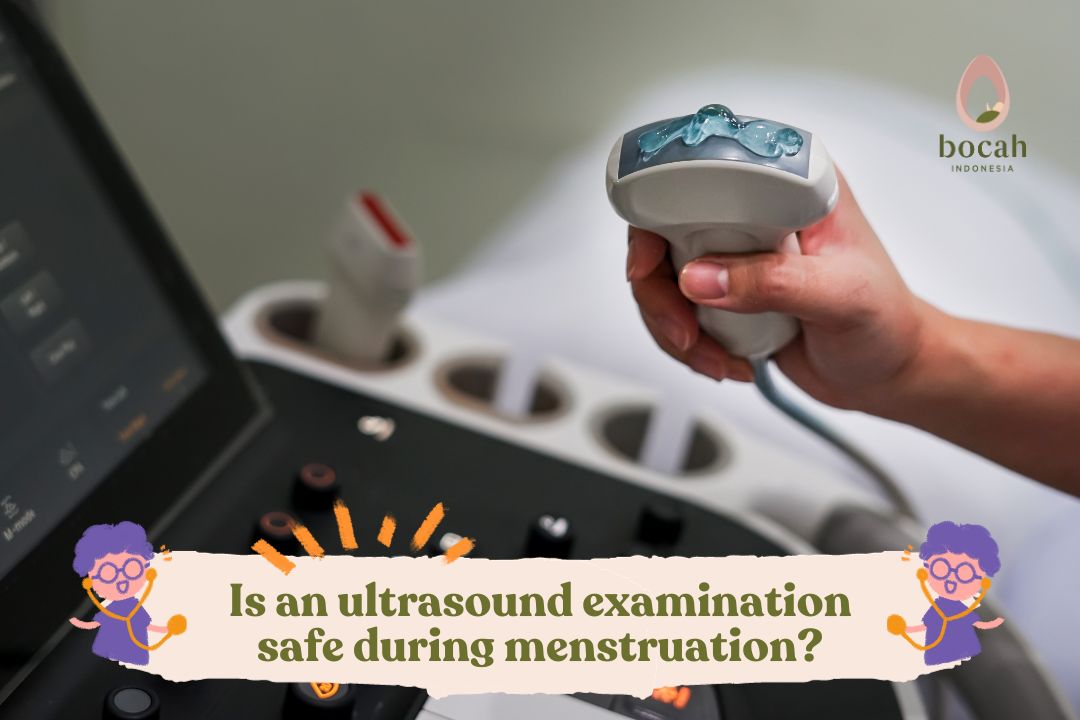Let’s Get to Know 8 Benefits of Gynecological Ultrasound for Moms!

Gynecological ultrasound plays an important role in assessing uterine health, fertility, and pregnancy programs. Let’s discover its benefits here.
For moms, maintaining reproductive health is essential. One of the most common examinations to monitor reproductive organs is the gynecological ultrasound (USG ginekologi).
This examination is also often part of a fertility or pregnancy program (promil) for couples trying to conceive.
But what exactly is a gynecological ultrasound, and what information can it provide? Let’s find out!
What Is a Gynecological Ultrasound?
A gynecological ultrasound is an ultrasonography (USG) examination used to evaluate the condition of a woman’s reproductive organs including the uterus, ovaries (ovarium), and fallopian tubes.
This test uses high-frequency sound waves to create images of internal organs without radiation exposure.
It’s also frequently performed in in-vitro fertilization (IVF) programs to monitor uterine readiness before embryo transfer.
What Is the Purpose of a Gynecological Ultrasound?
Gynecological ultrasound is essential for assessing women’s reproductive health. Its purposes include:
Tanya Mincah tentang Promil?
1. Detecting abnormalities in the uterus
It helps identify uterine abnormalities such as myoma (fibroid), polyp, adenomyosis, or congenital uterine anomalies.
These conditions can affect menstrual cycles, fertility, and cause pelvic pain.
2. Assessing ovarian condition
USG can evaluate ovarian size, detect ovarian cysts, Polycystic Ovary Syndrome (PCOS), or ovulation disorders associated with infertility.
3. Evaluating endometrial thickness and condition
The endometrium (inner uterine lining) plays a crucial role in pregnancy success, particularly for women undergoing fertility programs or IVF.
Ultrasound helps determine whether the endometrial lining is at an ideal thickness to support embryo implantation.
4. Assessing fallopian tube function and structure
Although fallopian tubes are not easily visualized on standard ultrasound, it can help detect issues such as hydrosalpinx (fluid-filled or blocked tubes), which may prevent the meeting of egg and sperm.
5. Examining the cervix (serviks)
Ultrasound can assess cervical length and structure, especially in pregnant women at risk of preterm labor or those with cervical incompetence.
6. Detecting causes of menstrual disorders
If you experience irregular cycles, heavy bleeding, or severe menstrual pain, ultrasound can help doctors find the cause, such as hormonal imbalance, endometriosis, or uterine fibroids.
7. Monitoring follicle development during fertility programs
For women undergoing fertility treatment, ultrasound is used to monitor follicle growth in the ovaries.
This helps determine the optimal ovulation timing to maximize the chances of conception.
8. Part of routine reproductive health screening
Gynecological ultrasound is also recommended as part of routine health screening, especially for women with reproductive issues, those planning pregnancy, or entering menopause.
Gynecological Ultrasound Procedure
Gynecological ultrasound is an imaging procedure used to assess the health of the female reproductive organs.
It uses high-frequency sound waves to visualize the uterus, ovaries, and surrounding pelvic structures.
The examination typically includes the following organs:
-
Uterus – to assess its structure, size, and detect abnormalities such as fibroids or polyps that can affect menstruation and fertility.
-
Ovaries – to evaluate size, follicle count, and detect cysts or other disorders related to infertility and PCOS.
Ovarian cysts are clearly visible on ultrasound, allowing doctors to assess their size, shape, and contents — whether fluid-filled or solid.
Based on these findings, doctors can determine whether the cyst is benign or requires further evaluation. -
Endometrium – to assess the thickness and condition of the uterine lining, crucial for conception and IVF preparation.
-
Fallopian tubes – while difficult to see directly, ultrasound can help detect possible blockages or abnormalities affecting fertility.
-
Cervix – ultrasound may be used to evaluate cervical length and integrity, especially if there’s a risk of pregnancy complications.
Gynecological ultrasound can be performed using two methods:
-
Transabdominal ultrasound (through the abdomen)
-
Transvaginal ultrasound (through the vagina)
The choice depends on the medical indication and the patient’s condition.
When Is the Best Time to Perform a Uterine Ultrasound?
Ultrasound examination can be done at any time depending on medical needs.
However, the ideal timing varies according to its purpose:
-
For routine checkups, it’s best done at the beginning or end of the menstrual cycle.
-
For those planning pregnancy, the 10th–14th day of the cycle is ideal to assess the endometrium, particularly for those in fertility programs.
-
For women with pain or menstrual irregularities, it can be performed anytime based on symptoms.
-
If fibroids or polyps are suspected, the timing will be adjusted according to the specific condition being evaluated.
Conclusion
Gynecological ultrasound is a highly valuable tool for monitoring women’s reproductive health.
By undergoing ultrasound regularly or when symptoms appear, you can better understand your reproductive condition and take the right steps to maintain wellness.
If you have concerns or specific symptoms especially if you’re in a fertility program or facing infertility don’t hesitate to consult your obstetrician-gynecologist (OB-GYN) for personalized evaluation and care.
Source:
- Drukker, L., et al. (2020). Introduction to artificial intelligence in ultrasound imaging in obstetrics and gynecology. Ultrasound Obstet Gynecol. 2020 Oct;56(4):498-505.
- Cleveland Clinic (2022). Diagnostics & Testing. Ultrasound.
- Herndon, Jaime. Healthline (2018). What Is a Transvaginal Ultrasound?
- National Health Service UK (2021). Health A to Z. Ultrasound Scan.










